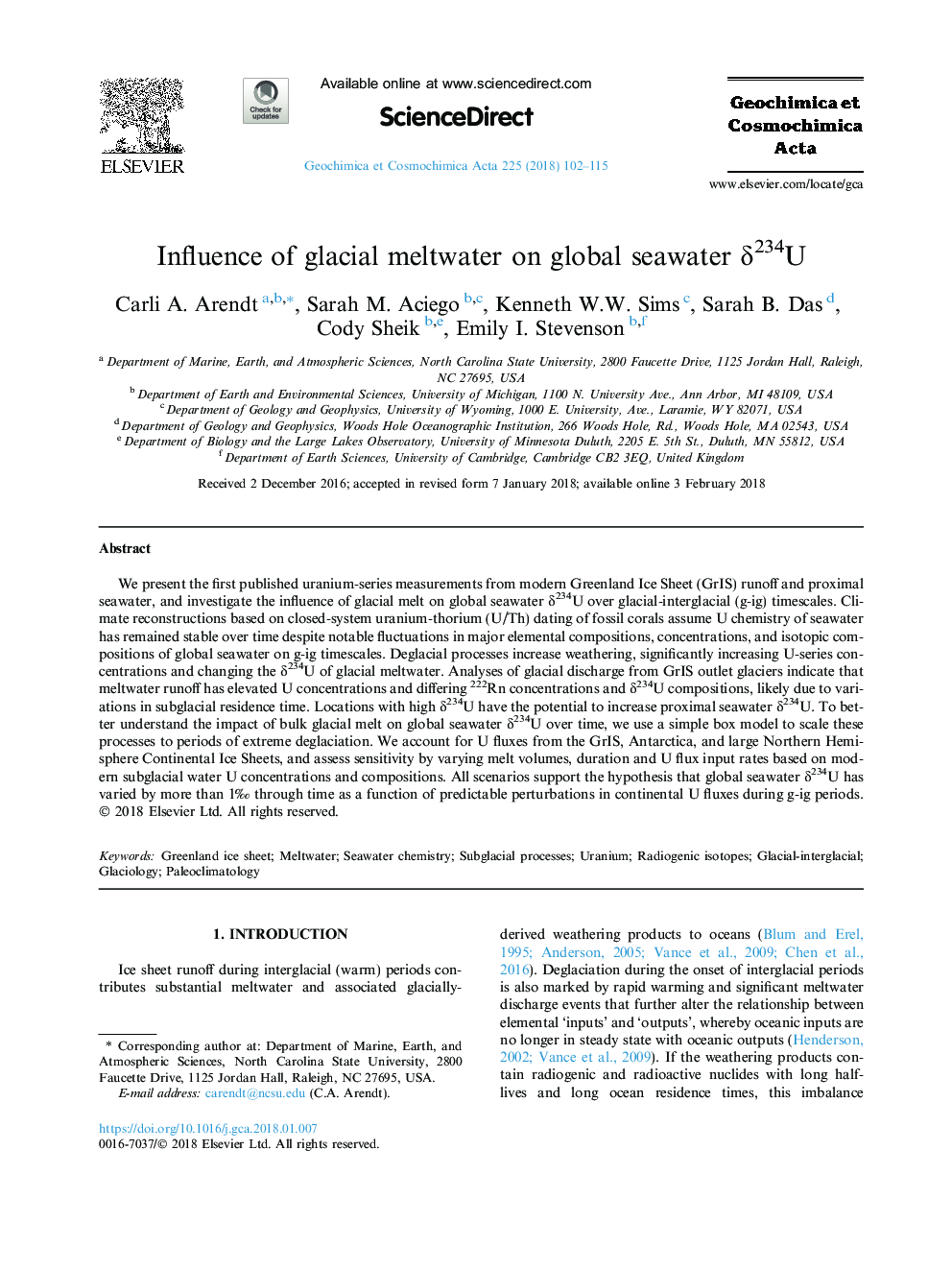| Article ID | Journal | Published Year | Pages | File Type |
|---|---|---|---|---|
| 8910844 | Geochimica et Cosmochimica Acta | 2018 | 14 Pages |
Abstract
We present the first published uranium-series measurements from modern Greenland Ice Sheet (GrIS) runoff and proximal seawater, and investigate the influence of glacial melt on global seawater δ234U over glacial-interglacial (g-ig) timescales. Climate reconstructions based on closed-system uranium-thorium (U/Th) dating of fossil corals assume U chemistry of seawater has remained stable over time despite notable fluctuations in major elemental compositions, concentrations, and isotopic compositions of global seawater on g-ig timescales. Deglacial processes increase weathering, significantly increasing U-series concentrations and changing the δ234U of glacial meltwater. Analyses of glacial discharge from GrIS outlet glaciers indicate that meltwater runoff has elevated U concentrations and differing 222Rn concentrations and δ234U compositions, likely due to variations in subglacial residence time. Locations with high δ234U have the potential to increase proximal seawater δ234U. To better understand the impact of bulk glacial melt on global seawater δ234U over time, we use a simple box model to scale these processes to periods of extreme deglaciation. We account for U fluxes from the GrIS, Antarctica, and large Northern Hemisphere Continental Ice Sheets, and assess sensitivity by varying melt volumes, duration and U flux input rates based on modern subglacial water U concentrations and compositions. All scenarios support the hypothesis that global seawater δ234U has varied by more than 1Ⱐthrough time as a function of predictable perturbations in continental U fluxes during g-ig periods.
Keywords
Related Topics
Physical Sciences and Engineering
Earth and Planetary Sciences
Geochemistry and Petrology
Authors
Carli A. Arendt, Sarah M. Aciego, Kenneth W.W. Sims, Sarah B. Das, Cody Sheik, Emily I. Stevenson,
